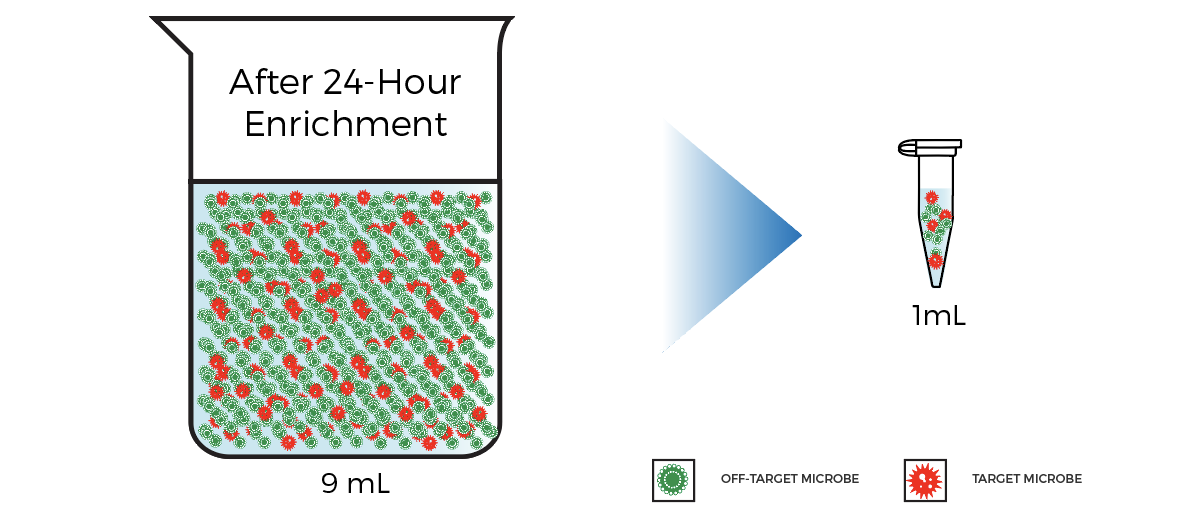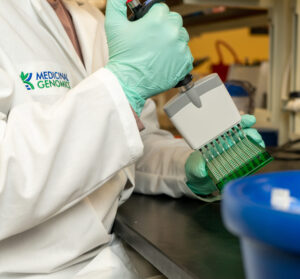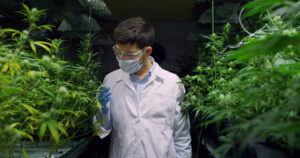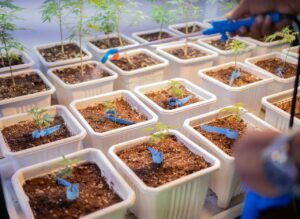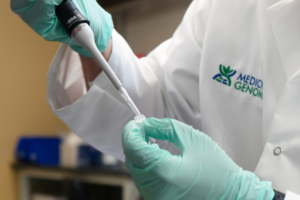It has been brought to our attention that some cannabis testing labs use methods for microbial detection that do not include an enrichment step. The news is concerning because enrichment is essential when testing for pathogens that could potentially cause illness or death in immunocompromised patients.
Our sample preparation protocol requires an enrichment period befure using our PathoSEEK® Microbial Safety Testing Platform to test for E. coli, STEC, Salmonella, Aspergillus fumigatus, A. flavus, A. niger, or A. terreus.
This is because states that require testing for those pathogenic microbes set the detection limit extremely low. For example, California regulations state that a 1 gram cannabis sample shall not contain any STEC, Salmonella, A. fumigatus, A. flavus, A. niger, or A. terreus. With such low detection limits, an enrichment step is needed to ensure there is no sampling bias when removing a small volume of liquid from sample preparation to qPCR testing.
Enrichment is also recommended in Chapter 65 of The United States Pharmacopeia (see below), which specifically states that samples tested for Salmonella and E. Coli should be incubated for 18-24 hours before subsampling and testing.
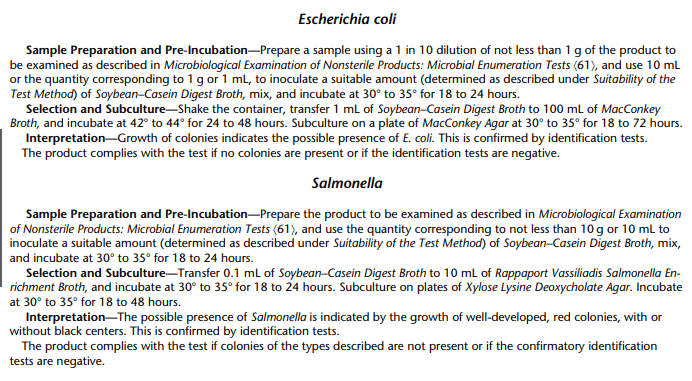
To better explain the issue, let’s walk through the sample preparation and DNA purification process performed with our SenSATIVAx DNA Purification Kit.
Sample Preparation
Before moving to qPCR testing, plant and microbe DNA is extracted from a cannabis sample using the Medicinal Genomics SenSATIVAx DNA Purification Kit. The process starts by placing a 1 gram cannabis sample into a Whirl Pac bag along with 19 mL of Tryptic Soy Broth. Tryptic Soy Broth is a growth medium that creates a perfect environment for microbes to grow. After mixing the sample with the broth for one minute, the sample is sufficiently homogenized.
Moving to qPCR
Here’s where the enrichment period becomes very important.
Of that 19mL, you will only use 1mL to complete the DNA purification process and perform qPCR testing. That 1mL is only 5% of the total volume. If your cannabis sample has pathogens present, it could be missed when removing the small amount from the bigger whole. You could complete the qPCR testing protocol and get a passing result, even though there were pathogens present on the sample.
Imagine a children’s ball pit filled with one thousand plastic balls. If only five of those balls were red, how confident would you be that you would pick red ball if you took out 80.
Enrichment helps to overcome this sampling bias. Pathogens like e. Coli double every 20 minutes. So if a trace amount of e. Coli were present in a sample, it will have doubled 48 times after an 16-hour incubation. At that rate, the 5 red balls in our ball pit would grow to 90 quadrillion (90,000,000,000,000,000). How much more confident are you that you could pick a red ball?
Enrichment greatly improves the likelihood that when you remove your 1mL for DNA purification and qPCR testing, a truly harmful pathogen will be captured. The image below visualizes the idea.
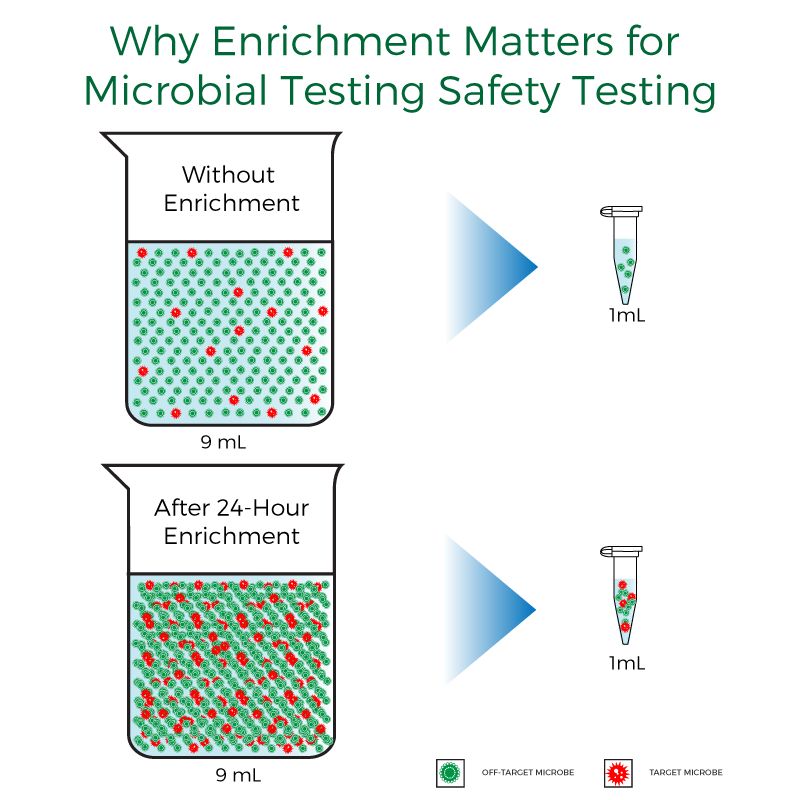
We understand this enrichment step increases turnaround time, but it is necessary in order to properly test cannabis for pathogens and keep patients safe. Part of our mission at Medicinal Genomics is to ensure patients have access to safe, quality cannabis. It is a responsibility we take very seriously. Beware of microbial testing technologies that skip this crucial step.

